Old money in the UK - pounds, shillings and pence an introduction

How did the old money system with pounds, shillings and pence work in the UK?
The pound was the same pound we use today. We still have a penny, but the old one was larger and worth a lot less. The shilling is no longer UK currency. It had a value of 12 old pennies, or 12 pence.
Britain changed to decimal currency with 100 pence in a pound in 1971. After that date people called the old currency system 'old money'. They used to say 'how much is that in old money?'
- How did the old money work?
- What were the old British coins?
- Old money v new money
- How did you write amounts in pounds, shillings and pence?
- Amounts in shillings
- How much did things cost in old money?
- Old money slang
- When did Britain stop using pounds, shillings and pence?
- How much is old money worth in today's money?
How did the old money work?
There were three units of currency: the penny, the shilling and the pound.
The penny was a large bronze coin. The shilling was a silver coin. It was the same size as the old 5p.
There were 12 pence in a shilling and 20 shillings in a pound.
That made 240 pence in a pound.
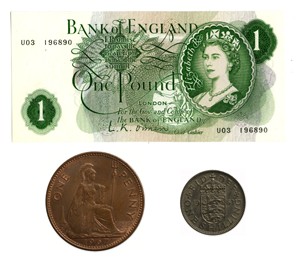
How did you write amounts in pounds, shillings and pence?
You wrote £ for pound, 's' for shilling and 'd' for pence.
They are short for the Latin words libra, solidus and denarius, or LSD. You could say 'how much is that in LSD?'.
Libra meant pound, solidus meant shilling and denarius meant penny. Solidus and denarius were Roman coins, libra was a Roman pound. The origins of pounds, shillings and pence go back to ancient times.
The other common symbol was the slash or oblique ('/'). People used it to divide amounts in shillings and pence.
15 shillings and 6 pence was 15s 6d or 15/6. If there were no pence you could use /- for a quantity in shillings, so 5/- was 5 shillings.

You could say the symbol for 1 shilling was 1/-.
For example, a jar of instant coffee might cost 2/3 - 2s 3d or two shillings and three pence.
How did people say amounts in pounds, shillings and pence?
For amounts less than a shilling, you said the amount in pence, eg '7 pence' or '7 and half pence'.
You could also say penny-ha'penny for 1½d. In older English you could say the amount in farthings, eg 'You owe me five farthings, Say the bells of St Martin's' from the nursery rhyme, 'Oranges and Lemons'.
For amounts in shillings and pence you said '2 and 6' for two shillings and six pence. For amounts in just shillings, it was common to say '2 shillings'.
What were the old British coins?
What were the names of the old British coins?
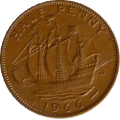
Half Penny
1/2d

Sixpence
6d
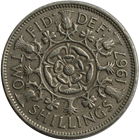
Two Shillings
2s or 2/-
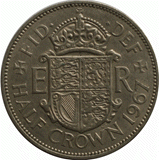
Half crown
2s 6d or 2/6
British pre-decimal coins in the twentieth century were:
- Farthing (¼d) - quarter of an old penny
- Halfpenny (½d) - half an old penny or ha'penny - pronounced ˈheɪpni'
- Penny (1d)
- Threepence (3d) - or threepenny bit or 3d bit - pronounced thruppence or thruppenny bit
- Sixpence (6d)
- Shilling (1s or 12d)
- Two shillings or florin (2s or 24d)
- Half crown ('Two and six' 2s 6d)
- Crown (5s) [issued on special occasions only]
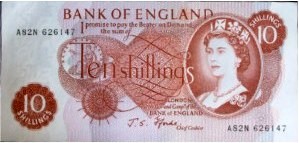
Farthings, halfpennies and pennies were bronze. The threepenny bit was brass. It had twelve sides.
Before 1937 the threepenny bit was silver. There was a tradition of putting a silver threepenny bit or a sixpence in a Christmas pudding for a lucky child to find.
The sixpence, shilling, two shillings and half crown coins were silver. They were real silver before 1920.
There was also a crown coin which the Royal Mint issued on special occasions.
For larger amounts, there were banknotes. There was a ten shilling note (worth 50p in decimal) £1, £5 and £10 notes.
What about the guinea?

One guinea was 21 shillings or one pound and one shilling. There were no guinea coins in the twentieth century.
You still got bills in guineas from solicitors, accountants and other professionals. If you went on holiday you might have to settle your hotel bill in guineas. It was a way of sounding posh and also making a bill seem a little bit smaller than it actually was.
What about the sovereign?
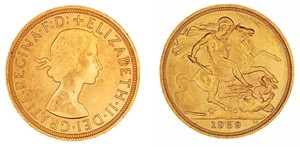
Gold sovereigns with a face value of £1 and half-sovereigns with a face value of 10 shillings (50p) were legal tender in the 1960s. They remain so today. Although you would be extremely lucky if someone gave you a gold sovereign instead of a pound coin.
In the 1960s only collectors with a licence were allowed to own sovereigns.
Old money v new money coins
| Old money | New money | |
|---|---|---|
| Pence in a pound | 240 | 100 |
| Smallest coin | ½d | ½p |
| Highest value coin | Half crown(2/6) | 50p |
| Bronze coins | ¼d, ½d, 1d | ½p, 1p, 2p |
| Brass coins | 3d | none |
| Silver(*) coins | 6d, 1s, 2s, 2s 6d | 5p, 10p, 50p |
(*) Cupro-nickel
When Britain's decimal system was introduced in 1971, the value of money had gone down. We no longer had farthings as they were withdrawn in 1960. The smallest old money coin was the halfpenny. It was worth 0.2p, so not very much. The new decimal halfpenny was worth more than double. It was worth more than the old penny which had a decimal value of 0.42p.
The decimal value of the old money coins is as follows:
| Coin | Value | Closest decimal coin |
|---|---|---|
| Farthing | 0.10p | None |
| Halfpenny | 0.21p | None |
| Penny | 0.42p | New halfpenny |
| Threepence | 1.25p | New penny |
| Sixpence | 2.5p | New twopence |
| Shilling | 5p | Five new pence |
| Two shillings | 10p | Ten new pence |
| Half crown | 12.5p | Ten new pence |
| Ten shillings (note) | 50p | Fifty new pence |
Amounts in shillings
Some shops priced things in shillings rather than pounds, shillings and pence. For example, an Action Man Soldier (GI Joe in America) was 27/6 in 1970.
That is 27 shillings and 6 pence (old pence).
You also got larger amounts in shillings. It might be useful to know that:
- 25 shillings was £1 5 shillings - in decimal £1.25
- 40 shillings was £2
See Amounts in shillings for how to convert shillings to pounds.
How much did things cost in old money?
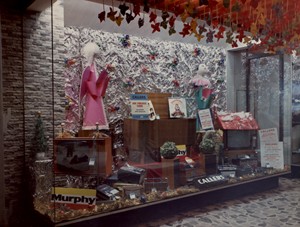
1970 was the last full year of old money. Britain's pound had much more buying power.
For 1970 prices, think of one shilling as 50p, two shillings as £1 and half a crown as £1.25.
In earlier times, money was worth more. When the war ended in 1945, one shilling was worth £1.50 in today's money and in the 1930s between £2.30 and £2.50.
So how much was a can of baked beans?
These are some typical prices from 1965:
| English butter per lb | 3/- |
| Baked beans lb | 9d |
| Kellogg's corn flakes 12oz | 1/5 |
| Nescafé 2oz | 2/3 |
| Omo washing powder per lb | 1/11 |
So what is that in today's money? Translating these prices at face value, they work out at 15p for a lb of butter, 4p for the baked beans, 7p for the cornflakes, 11p for the coffee and 10p for the Omo.
But what about inflation? According to the retail price index, prices have gone up by a factor of twelve since 1965.
Taking inflation into account, these prices would have been £1.25 for a lb of butter, 48p for a lb of baked beans, 84p for 12oz of cornflakes, £1.32 for 2oz of Nescafe and £1.20 for a 1lb of Omo.
Read more:
Slang terms for old money

You might hear the term bob for a shilling. The Boy Scouts did 'Bob-a-job' week.
Bob-a-job week started in the UK in 1949. Then one shilling was worth £1.30 in today's money.
In my day the Scouting Movement discouraged the term. They wanted more than a bob a job in the high inflation days of the 1970s.
Bob-a-job week officially ended in 1992.
Another common slang term was a tanner for a sixpence. For more see slang terms for old money
When did Britain stop using pounds, shillings and pence?
Old money officially came to an end on 15 February 1971. For a short time, some shops still priced goods in old money, but by the summer of that year pounds, shillings and pence had disappeared. Read more about decimalisation.
The old coins disappeared on different dates. The last one, the two shillings or florin, was still legal tender in 1993.
- Farthing withdrawn on 1 January 1961
- Halfpenny withdrawn on 1 August 1969
- Half crown withdrawn on 1 January 1970
- Ten shilling note withdrawn on 22 November 1970
- Penny withdrawn on 1 September 1971
- Threepenny bit withdrawn on 1 September 1971
- Sixpence withdrawn on 1 July 1980
- Shilling (and original 5p) withdrawn on 1 January 1990
- Two shillings (and original 10p) withdrawn on 1 July 1993
The Royal Mint withdrew the farthing on 1 January 1961, well before the UK Government made any decision on decimalisation.[1]
When the Government decided to introduce decimal currency, the Royal Mint withdrew a few of the £sd coins.
The halfpenny was no longer legal tender from 1 August 1969[2] and the half crown from 1 January 1970. [3]
The Bank of England called in the ten shilling note on 22 November 1970. This meant it was no longer legal tender, but you could still can take it to the Bank of England and change it for 50p.
The penny and threepence were still legal tender on D-Day (Decimal Day), 15 February 1971. You could still use them to pay for goods in new and old money until 1 September 1971 [4], when they were withdrawn. This worked because 6d was 2½ in decimal.
The remaining old coins had a much longer life. The sixpence continued in use until 30 June 1980 and was no longer legal tender from 1 July 1980.
The Royal Mint withdrew the shilling and florin (two shillings) coins when it introduced the new smaller 5p and 10p coins. The shilling remained legal tender until 30 December 1990 and the florin or two shilling piece until 30 June 1993.
So the last day you could legally spend a £sd coin or note was 30 June 1993.
The two shilling piece or florin was first struck in 1849 in Queen Victoria's reign as a small step towards decimal currency. The first florins were marked 'One tenth of a pound'. So it was both Britain's first decimal coin and the last pre-decimal coin.
Old money amounts in today's money
Many people ask 'what is the value of old money in today's money?'. This is a difficult question to answer. There are three values: the face value, the value in real terms and the value of a coin to a collector.
The face value of old money
In 1971 when Britain went decimal there was a conversion applied to old money. Instead of 240 pence in the pound there were 100. An old penny had a face value of 0.42p and a shilling had a nominal value of 5p. See old money v new money.
The face value bears no relation to the spending power of the old coins in today's money. For that we need to consider the real value.
Real value of old money coins
What was the spending power of old money coins in the past?
These tables show the spending power of old money in different eras. They are broad averages based on the Consumer Price Index.
As you can see the value of money could go up as well as down. There was deflation as well as inflation.
| Coin | 1700s | 1800s | 1900-1914 |
|---|---|---|---|
| Farthing | 14p | 9p | 10p |
| Penny | 57p | 35p | 39p |
| Shilling | £6.80 | £4.20 | £4.70 |
| Pound | £133 | £83 | £94 |
| Coin | 1920s | 1930s | 1940s |
|---|---|---|---|
| Farthing | 4p | 5p | 3p |
| Penny | 18p | 21p | 13p |
| Shilling | £2.15 | £2.69 | £1.60 |
| Pound | £43 | £52 | £32 |
| Coin | 1950s | 1960s | 1970 |
|---|---|---|---|
| Farthing | 2p | 1p | 1p |
| Penny | 8p | 6p | 5p |
| Shilling | 97p | 71p | 57p |
| Pound | £19 | £14 | £11 |
For a general feel of values before the First World War, think of a farthing as 10p, a penny as 40-50p, a shilling as £5 and a pound as £100.
A gold sovereign, which was a coin worth £1 in 1914, had a value in today's money of £100. Quite something to have a coin worth £100 in your pocket. Most people never owned a sovereign. The price of gold today has done better than the pound sterling. A gold sovereign today is worth £300.
After the First World War prices changed significantly. On the eve of decimalisation a shilling was worth 57p.
Collectors' value of old coins
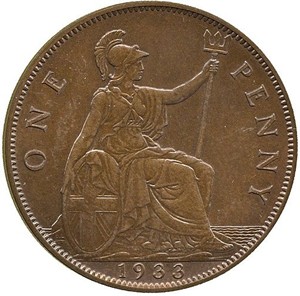
Attribution: Clemchambers for the image. Andre Lavillier or possibly some earlier Royal Mint engravers for the coin, Public domain, via Wikimedia Commons licenced under Attribution-ShareAlike 3.0 Unported (CC BY-SA 3.0)
The value of an old coin can be almost nothing or thousands of pounds.
The majority of bronze coins from the old money era have no real value. You need to find uncirculated (unused) examples.
Rarity can make a huge difference to value. A one penny coin from 1933 sold for £72,000 ($100,000) in 2016. It was one of only four 1933 pennies.
Silver coins before 1947 have a value based on the scrap value of silver. Coins in good condition and from the Victorian era or earlier will be worth more. Collectors grade coins on condition and those in the higher grades: uncirculated, or extremely fine attract the highest prices.
The Royal Mint used cupro-nickel instead of silver after 1946. The cupro-nickel 'silver' coins have very little collector value today unless they are rare and in uncirculated condition.
Gold coins are always valuable because of the value of gold. Depending on the gold price, a sovereign will be worth around £300 scrap value. It may be worth much more to a collector because of rarity and condition.
What were the oldest coins in circulation?

Before Britain went decimal in 1971, the oldest legal tender coins were 1816 silver half crowns, shillings and sixpences from George III's reign. The shilling remained legal tender until 1990.
The oldest legal tender florin was the first one from 1849.
Pennies, halfpennies and farthings from 1860 were the oldest bronze coins still legal before 1971.
Why use a non-decimal system?
The advantage of the system over decimal was that it was easy to divide. You could divide a pound into:
- Half - 120 pence
- One third - 80 pence
- One quarter - 60 pence
- One fifth - 48 pence
- One sixth 40 pence
In the days before computers and calculators, this was useful for trading.
Did other countries used old money?
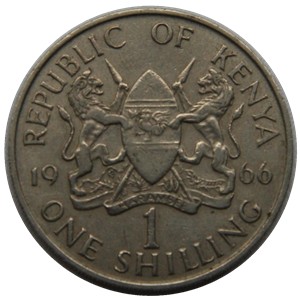
Yes. Many countries in the British Commonwealth and former Empire used the pounds, shillings and pence system at some point in the past. The Republic of Ireland also used pounds shillings and pence until 1971.
The shilling lives on as the official currency of some African nations. Kenya, Somalia, Somaliland, Tanzania and Uganda all use the shilling. The Kenyan shilling is divided into 100 cents, but no coins are minted today for amounts below 1 shilling.
The Somaliland one shilling coin carries the old style abbreviation 1/-.
Read more about:
Buy old money
If you want to buy a set of 'old money', the best way is to buy a complete set from a specific year. They can make great birthday present, especially if you can find a set dating from the year the person was born.
They are not as expensive as you might think. A complete set of coins from a specific year from the 1950s or 1960s should cost no more than £25 and often a lot less. Look for:
New money
From 1968, to be ready for decimalisation, the Royal Mint started to mint decimal coins.
The Mint started with coins denominated in 'New Pence' of values five and ten. They worked with the old system as they were direct replacements for the one and two shilling pieces. In those days today's pence were 'new pence'.
References
[1] The Guardian 31 December 1960 [1]
[2] The Times 30 July 1969, page 20 issue 57625
[3] The Times 31 December 1969, page 1, issue 57755
[4] The Times 3 August 1971, page 4, issue 58240
By Steven Braggs, February 2003, latest update October 2021
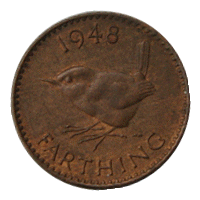
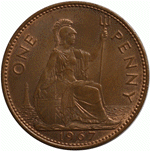
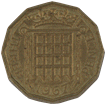
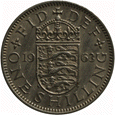


Comments
Hello,
I was just reading an article on a family that was on the Titanic. They were on their way to starting a new life in Idaho.
The article says, ”In the Titanic's hold were the few personal possessions that the family had kept after the sale of their home -- which meant that everything the Collyers owned was on board the Titanic, which they boarded under joint ticket number 31921 which cost £26, 5s).
I was wondering if there was a way of knowing how much money that equalled in today’s time.
The Titanic disaster was in 1912. Since then the value of money has gone by a factor of over 100. £26 5s in 1912 would be worth £2700 in today's money. Incomes have risen more than prices, so in relation to people's earnings it would have been even more, close to £16,000.
Can anyone explain how the following occurs…… Converting from old £’s sterling to new £’ decimal. With the old system there were 12 pence to 1 shilling and 20 shillings to 1 pound. It was wtitten like this e.g 8 shillings and four pence was 8/4 and 3 shillings and 6 pence as 3/6. When converting to the decimal eqivalent, call the 8/4 84 and then half it …… 42pence decimal. Likewise 3/6 becomes 36 ; half it = 18 decimal pence. Naturally the reverse is also true e’g 48 decimal pence ,double it becomes 96. Then 96 = 9/6 (9 shillings and 6 pence)
Hi Gordon,
It's an approximation. The shillings works exactly. You multiply the amount by 10 then divide it by 2. So you multiply it by 5. A shilling is 5p.
The amount in pence is divided by 2. You really need to divide it by 2.4 to go from old to new pence. If we ignore halfpence it mostly gets the right answer if you round up for 6d and down for 9d. But 8d is wrong 8d should be 3p not 4p.
But how do you cope with 10d and 11d. E.g. 7/11?
Even when we were learning about New Money at school - I would have been 13 - that simple wee trick never came up, and we spent at least 6 months learning before "D-day"! And we had "New Pence" in 5p (a bob/shilling) & 10p (two Bob bit or a Florin, though Florin tended to be used by mainly older folks as the 60s progressed. I think they appeared in '68... For several years, in fact all through the 70s, the 50p piece was more likely to be referred to as a "Ten Bob Bit".)
My favourite Holiday movie is the 1951 British Alistair Sim of A Christmas Carol (actually called Scrooge) and in it Bob Cratchit has found a position for his son for 4.5 and 6 shillings a week. Even after reading all on this page, I am still unsure as to what this would be equivalent to. Could you tell me what the value would have been then and what it would be equivalent to now, please? Having lived in the UK before and after the currency change, it became much easier for me once it was the decimal related currency.
I have assumed a Christmas Carol was set in the early 1800s. I'm not sure what 4.5 and 6 shillings means. 4.5 shillings would have been £19 in today's UK money. 6 shillings would have been £29. This doesn't seem much compared to an average wage of £578 today.
But the average wage for 1800 was 9 shillings a week.
In the book 'A Christmas Carol' Scrooge talks about his clerk earning 15 shillings a week. This would have only been £63.
But incomes went up more than prices. Comparing incomes you could up-rate the clerk's weekly income to £985, a little under twice the average UK wage. Which would be about £50K a year. That might be cheap for a clerk in the City of London, but seems too high for what Scrooge might pay!
I have a 1 pound UK Bill and a shilling bill when I was wondering where I could get rid of them and how much they are worth
Almost any Major Bank UK Bank will exchange this for you and you can communicate with them online first.
Hi Steven. The price listed on the dust cover of an old book I have says “25s. net”. What did the net refer to? Tax?
This is a really good question. It does not refer to tax or VAT and is not related to pounds, shillings and pence. It refers to the Net Book Agreement. Publishers fixed the price and retailers had to sell the book for that price. There were no discounts. The agreement came to an end in the 1990s.